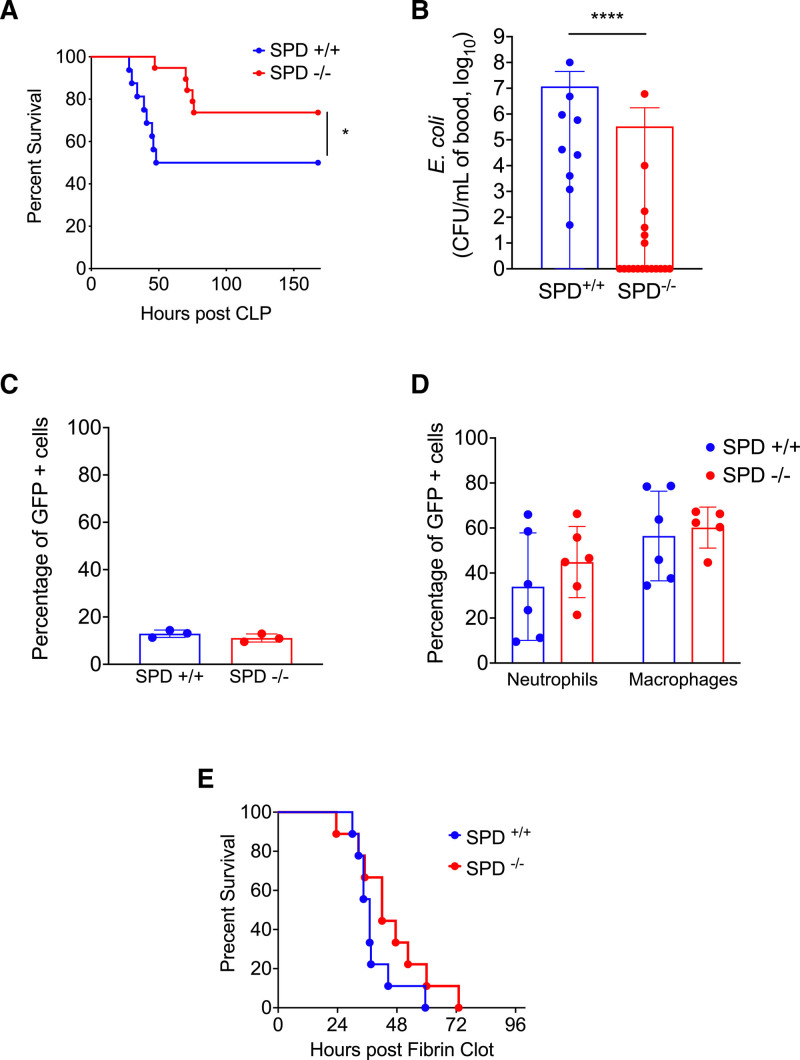Figure 1.
Surfactant protein D (SPD) deficiency reduces Escherichia coli bacteremia and mortality after cecal ligation and puncture (CLP) by reducing cecal colonization by E. coli. A, CLP (100 % ligation, 19-G puncture, two holes) was performed on SPD+/+ and SPD−/− mice (n = 16/group) (Gehan-Breslow-Wilcoxon, *p < 0.05). B, Blood E. coli load following CLP. E. coli colony forming units (CFU) in blood 24 hr after CLP (100% ligation, 19-G puncture, one hole) in SPD+/+ (n = 9) and SPD−/− (n = 18) mice (Mann-Whitney, ****p < 0.0001). C, Ex vivo phagocytosis. Neutrophils were isolated from SPD+/+ and SPD−/− mice (n = 3/group) and incubated with green fluorescent protein (GFP) expressing E. coli. The percentage of GFP+ cells was determined by flow cytometry (p > 0.05, Mann-Whitney). D, In vivo phagocytosis. SPD+/+ mice (n = 5–6) and SPD−/− mice (n = 6) were injected intraperitoneally with GFP expressing E. coli. Neutrophils and macrophages were identified by cell surface markers, and the percentage of GFP+ cells was determined by flow cytometry (p > 0.05, Mann-Whitney). E, Post E. Coli fibrin clot survival of SPD+/+ and SPD−/− mice (n = 9/group) (Gehan-Breslow-Wilcoxon, p > 0.05), where both SPD+/+ and SPD−/− mice were exposed to exogenous E. coli. E. coli for fibrin clot was isolated from SPD+/+ cecum.

